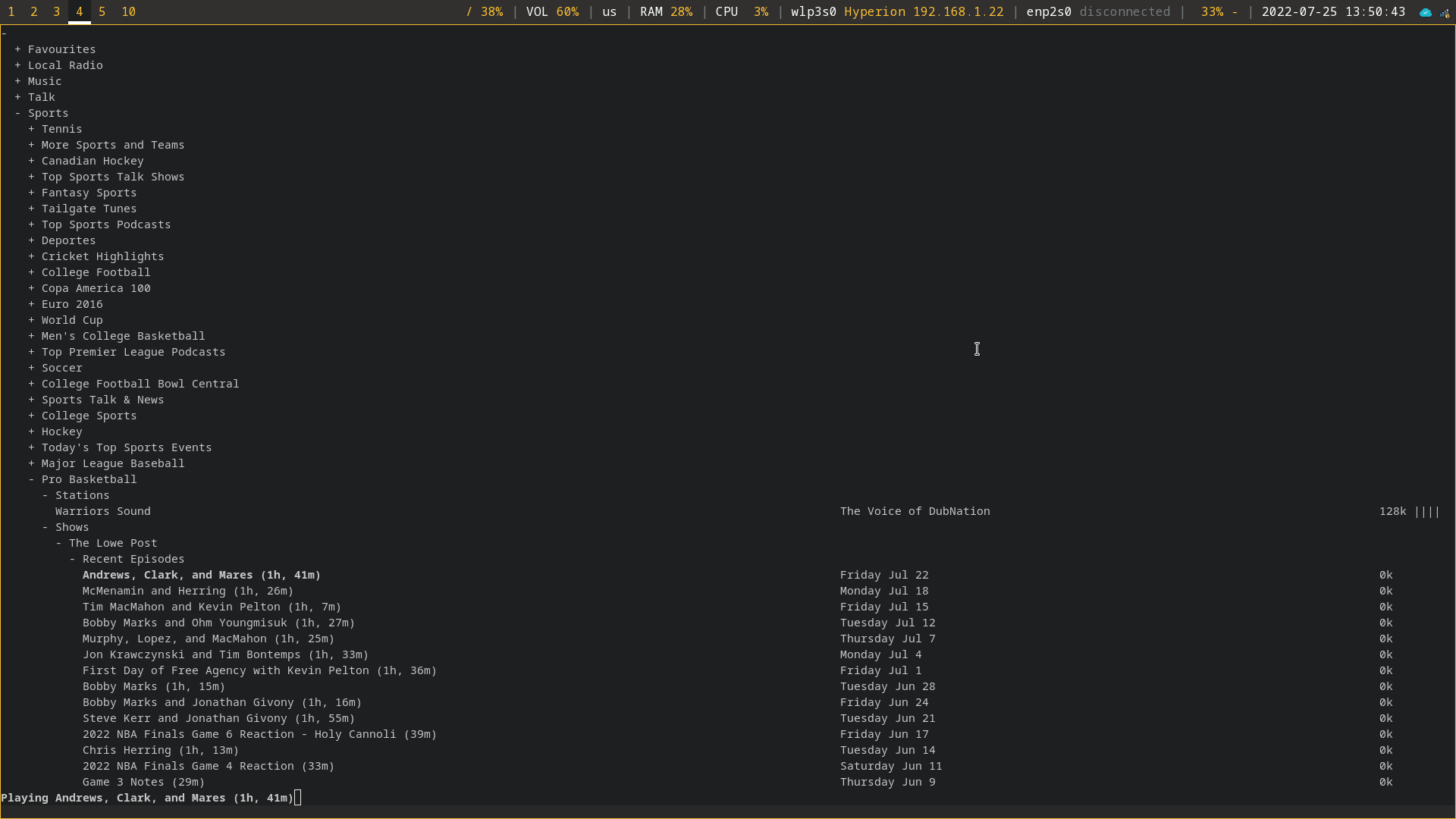diff options
| author | Christian Cleberg <hello@cleberg.net> | 2024-04-29 14:18:55 -0500 |
|---|---|---|
| committer | Christian Cleberg <hello@cleberg.net> | 2024-04-29 14:18:55 -0500 |
| commit | fdd80eadcc2f147d0198d94b7b908764778184a2 (patch) | |
| tree | fbec9522ea9aa13e8105efc413d2498c3c5b4cd6 /content/blog/2022-07-25-curseradio.md | |
| parent | d6c80fdc1dea9ff242a4d3c7d3939d2727a8da56 (diff) | |
| download | cleberg.net-fdd80eadcc2f147d0198d94b7b908764778184a2.tar.gz cleberg.net-fdd80eadcc2f147d0198d94b7b908764778184a2.tar.bz2 cleberg.net-fdd80eadcc2f147d0198d94b7b908764778184a2.zip | |
format line wrapping and fix escaped characters
Diffstat (limited to 'content/blog/2022-07-25-curseradio.md')
| -rw-r--r-- | content/blog/2022-07-25-curseradio.md | 78 |
1 files changed, 36 insertions, 42 deletions
diff --git a/content/blog/2022-07-25-curseradio.md b/content/blog/2022-07-25-curseradio.md index 683e750..11ef965 100644 --- a/content/blog/2022-07-25-curseradio.md +++ b/content/blog/2022-07-25-curseradio.md @@ -8,62 +8,56 @@ draft = false # Overview While exploring some interesting Linux applications, I stumbled across -[curseradio](https://github.com/chronitis/curseradio), a command-line -radio player based on Python. +[curseradio](https://github.com/chronitis/curseradio), a command-line radio +player based on Python. -This application is fantastic and incredibly easy to install, so I -wanted to dedicate a post today to this app. Let\'s look at the features -within the app and then walk through the installation process I took to -get `curseradio` working. +This application is fantastic and incredibly easy to install, so I wanted to +dedicate a post today to this app. Let's look at the features within the app +and then walk through the installation process I took to get `curseradio` +working. # Features  -The radio player itself is quite minimal. As you can see in the -screenshot above, it contains a simple plaintext list of all available -categories, which can be broken down further and further. In addition, -radio shows are available for listening, alongside regular radio -stations. +The radio player itself is quite minimal. As you can see in the screenshot +above, it contains a simple plaintext list of all available categories, which +can be broken down further and further. In addition, radio shows are available +for listening, alongside regular radio stations. -For example, the `Sports` \> `Pro Basketball` \> -`Shows` category contains a number of specific shows related -to Professional Basketball. +For example, the `Sports` > `Pro Basketball` > `Shows` category contains a +number of specific shows related to Professional Basketball. -Aside from being able to play any of the listed stations/shows, you can -make a channel your favorite by pressing `f`. It will now -show up at the top of the radio player in the `Favourites` -category. +Aside from being able to play any of the listed stations/shows, you can make a +channel your favorite by pressing `f`. It will now show up at the top of the +radio player in the `Favourites` category. ## Commands/Shortcuts - Key(s) Command - ------------ --------------------------------- - ↑, ↓ navigate - PgUp, PgDn navigate quickly - Home, End to top/bottom - Enter open/close folders, play stream - k stop playing stream - q quit - f toggle favourite +| Key(s) | Command | +|------------|---------------------------------| +| ↑, ↓ | navigate | +| PgUp, PgDn | navigate quickly | +| Home, End | to top/bottom | +| Enter | open/close folders, play stream | +| k | stop playing stream | +| q | quit | +| f | toggle favourite | # Installation ## Dependencies -Before installing `curseradio`, a handful of system and -Python packages are required. To get started, install -`python3`, `pip3`, and `mpv` on your -system. In this example, I\'m using Fedora Linux, which uses the -`dnf` package manager. You may need to adjust this if you\'re -using a different system. +Before installing `curseradio`, a handful of system and Python packages are +required. To get started, install `python3`, `pip3`, and `mpv` on your system. +In this example, I'm using Fedora Linux, which uses the `dnf` package manager. +You may need to adjust this if you're using a different system. ```sh sudo dnf install python3 pip3 mpv ``` -Next, use `pip3` to install `requests`, -`xdg`, and `lxml`: +Next, use `pip3` to install `requests`, `xdg`, and `lxml`: ```sh pip3 install requests xdg lxml @@ -71,23 +65,23 @@ pip3 install requests xdg lxml ## Repository Source Installation -Once all the dependencies are installed, we can clone the source code -and enter that directory: +Once all the dependencies are installed, we can clone the source code and enter +that directory: ```sh git clone https://github.com/chronitis/curseradio && cd curseradio ``` -Once you\'re within the `curseradio` directory, you can -install the application with the provided `setup.py` script. +Once you're within the `curseradio` directory, you can install the application +with the provided `setup.py` script. ```sh sudo python3 setup.py install ``` -In my case, I ran into a few errors and needed to create the folders -that curseradio wanted to use for its installation. If you don\'t get -any errors, you can skip this and run the app. +In my case, I ran into a few errors and needed to create the folders that +curseradio wanted to use for its installation. If you don't get any errors, you +can skip this and run the app. ```sh sudo mkdir /usr/local/lib/python3.10/ |
